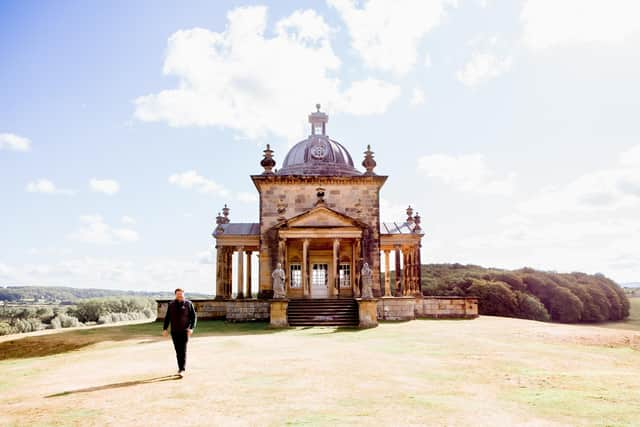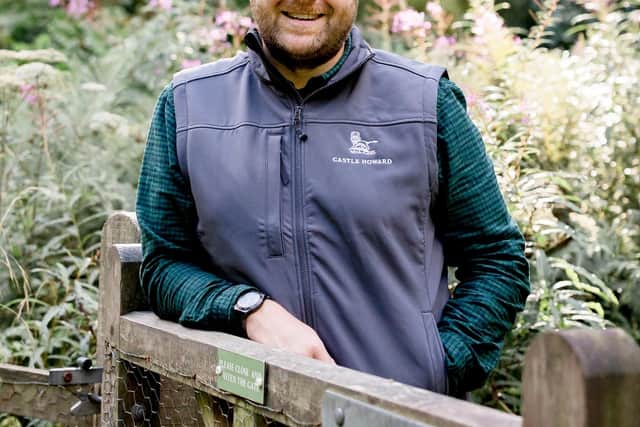Castle Howard appoints Head of Natural Environment as part of 15 year masterplan
Building on its 300-year custodianship of the natural environment, the Castle Howard Estate is taking a new science-based approach to land management from the soil up, as it seeks to actively manage the impacts of climate change and improve biodiversity as part of a 15 year masterplan.
Guy Thallon, who was previously at Food and Environment Research Agency (FERA), brings 12 years of experience within the agri-food-environment sector, where he has used cutting edge agri-environmental science to promote the rapid and widescale adoption of sustainable and innovative land management practices. At FERA, this included leading strategic programmes that supported partners in their agricultural transition to regenerative systems and nature-based approaches.


Advertisement
Hide AdAdvertisement
Hide AdHe started his career as a soil scientist, where he applied academic knowledge to commercial spheres, to deliver a programme of innovation in the agri-food sector as part of a three-year project with Cranfield University.
His role will see him develop a transformative, long term Natural Environment strategy that will both secure the future of the estate as it faces unprecedented challenges from climate and ecological change, as well as having have far reaching benefits for the wider rural economy and the local communities who live on and near the estate.
The appointment comes as Castle Howard, which has more than 2500 acres of woodland in Howardian Hills AONB, embarks on a 15-year masterplan to Restore, Regenerate and Revive the estate through purposeful development.
Mr Thallon said: “I believe passionately that nature-based solutions and effective management of natural and farmed environments will play a critical role in responding to the dual challenge of the climate and ecological emergencies, and I’m looking forward to leading the change at Castle Howard at it takes this new approach to the management of its estate.


Advertisement
Hide AdAdvertisement
Hide Ad“Our aim is to firstly, establish the natural capital of the different landscapes on the estate in order to actively manage biodiversity and improve carbon stock and sequestration, and secondly, address the significant rate of change in farming due to forces such as Brexit, agflation and climate change, in order to future-proof the estate’s management of its land for years to come.”
As part of its plans, Castle Howard has already embarked on a unique mapping exercise which saw it using satellite data to create a detailed digital map its 9,000-acre estate.
Covering everything from soil health to land permeability for wildlife, the map, known as the Natural Capital Baseline, will allow Castle Howard to scenario plan and visualise land management decisions as it looks at activities such as future carbon sequestration, the impact of regenerative farming and reforestation programs.
Jasper Hasell, Estate Chief Executive, said: “Castle Howard has a long history of working with nature, but we have ambitious plans to make the Natural Environment central to everything we do.
Advertisement
Hide AdAdvertisement
Hide Ad"Guy’s appointment comes at an important time in the Estate’s history, as we look to evolve our land management practices in the face of climate and ecological change, as well as regenerate the land and expand access to our green spaces for future generations.
“An Estate like ours can play a really important role in rural regeneration, and it’s our hope that our approach to land management and purposeful development can become a blueprint for other land-based businesses looking to secure their future.”
The 15 year plan comes with the backdrop of rising restoration costs, the impact of COVID-19, the climate and biodiversity emergencies, and a lack of rural housing and services.
Castle Howard, which employs 120 local people and welcomes more than 270,000 visitors a year, says this is an exciting and nationally important opportunity to redefine the role that an Estate like Castle Howard can play in rural regeneration.
Advertisement
Hide AdAdvertisement
Hide AdIt says that, done correctly, it has the potential to become a blueprint for others to follow with Purposeful Development acting as a catalyst to solving the challenges faced by rural communities such as sustainability, housing and community services.

